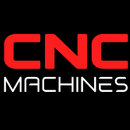CNC and Industry 4.0 in 2025: A Case Study on Smart Manufacturing Success

CNC and Industry 4.0 in 2025
A Case Study on Smart Manufacturing Success
As Industry 4.0 continues to revolutionize global manufacturing, CNC machine shops are adopting advanced tools—like real-time data analytics, IoT-enabled sensors, and digital twins—to optimize production. By 2025, the gap is widening between shops that embrace these technologies and those stuck in traditional processes. Below, we explore a real-world case study that reveals how one CNC business harnessed smart manufacturing to solve persistent challenges and position itself for long-term success.
The Challenge: Rising Costs and Inefficiency
In 2024, HighPoint Machining, a mid-sized CNC shop specializing in automotive and aerospace components, saw operating costs creep upward. Despite modern CNC mills and lathes, the shop suffered from:
- Unplanned Downtime: Machines stalled frequently due to unpredictable tool failures or coolant issues, causing missed delivery targets.
- Inefficient Scheduling: Production managers relied on offline spreadsheets, struggling to reassign workload quickly when rush orders arrived.
- Limited Visibility: Operators had minimal insight into real-time spindle loads or cutting conditions, often guessing at ideal feeds and speeds to balance speed and tool life.
With profit margins shrinking, management recognized that continuing with manual processes wasn’t sustainable in a marketplace craving faster turnarounds and near-zero defects.
The Solution: Embracing Industry 4.0 Technologies
Early in 2025, HighPoint Machining revamped its entire approach, adopting Industry 4.0 strategies centered on IoT sensors, data analytics, and advanced CNC software integration.
1. IoT-Enabled Machines and Sensors
- Machine Health Monitoring: Each CNC lathe and mill was retrofitted with sensors tracking spindle temperature, vibration levels, coolant flow, and tool usage. Data streamed in real time to a central dashboard.
- Predictive Maintenance: An AI-driven platform analyzed sensor data, flagging anomalies (e.g., spindle bearing wear) before breakdowns occurred. Operators received automated maintenance alerts.
2. Real-Time Production Analytics
- Digital Twins: A virtual model replicated the machine floor status, simulating new job setups. Engineers tested scheduling scenarios, identifying optimum paths without trial-and-error on real machines.
- Live Performance Metrics: Large monitors displayed OEE (Overall Equipment Effectiveness) scores, cycle times, and part counts. Operators could instantly spot bottlenecks or idle spindles.
3. Enhanced CNC Software and Toolpath Optimization
- Adaptive CAM: The shop upgraded to a next-gen CAM suite featuring advanced toolpath optimization. G-code dynamically adjusted feeds/speeds based on sensor feedback, maintaining stable cutting conditions.
- Cloud-Based Collaboration: Engineers could modify programs or tool libraries from anywhere, pushing updates to machines with minimal downtime.
4. Automated Scheduling and Lights-Out Potential
- Scheduling Algorithm: A dynamic scheduling system allocated jobs to the next available machine, factoring in real-time machine status and job priority.
- Unmanned Shifts: With stable sensor-driven monitoring, HighPoint began lights-out machining on certain overnight runs. Operators came in the next morning to find entire batches completed without intervention.
Measurable Results
- 40% Increase in Productivity: Real-time data prevented unplanned downtime, while advanced toolpaths trimmed cycle times—leading to higher throughput.
- Significant Reduction in Scrap: Access to continuous load, temperature, and vibration data pinpointed potential tool wear early, dropping scrap rates by over 30%.
- Faster Lead Times: Improved scheduling and automated job hand-offs cut typical part turnarounds from two weeks to 7–10 days, attracting new rush-order clients.
- Employee Satisfaction: Freed from repetitive tasks (e.g., constant tool monitoring), operators focused on problem-solving and skill development, boosting morale and retention.
Key Lessons for Other CNC Shops
- Start with Data Collection: Even if you’re not ready for full AI or digital twins, installing basic IoT sensors on spindles and axes reveals instant insights for incremental improvements.
- Integrate Software Tools Gradually: HighPoint Machining introduced scheduling automation first, then advanced CAM features, ensuring operators had time to learn each new system step by step.
- Involve Operators Early: Training staff on interpreting dashboards and adjusting toolpaths fosters ownership and quick adoption of new workflows.
- Don’t Overlook Security: As machines become network-connected, robust cybersecurity measures—firewalls, encrypted data—are crucial to guard against external threats.
The Future of CNC and Industry 4.0
By 2025 and beyond, Industry 4.0 will only continue to evolve with more sophisticated AI, edge computing, and connected robotics. Machine shops that proactively invest in these capabilities—from predictive maintenance algorithms to lights-out manufacturing—stand to gain a major competitive edge. Those who cling to manual processes risk falling behind, struggling with downtime, inconsistent quality, and slow deliveries.
Next Steps
- Evaluate Your Current Infrastructure: Identify which machines or processes could benefit most from sensors or real-time monitoring.
- Prioritize ROI-Driven Upgrades: Focus on projects with clear returns, like a new CAM module that significantly reduces cycle times or a scheduling tool that eliminates idle machine hours.
- Collaborate with Technology Partners: Whether it’s a software vendor or an automation integrator, choose experts who understand both CNC machining and data-driven Industry 4.0 solutions.
Conclusion
By adopting CNC and Industry 4.0 solutions, HighPoint Machining positioned itself at the forefront of smart manufacturing in 2025—boosting productivity by 40%, slashing lead times, and leveraging real-time data for transformative process insights. This case study underscores that integrating IoT sensors, analytics platforms, and advanced CNC programming isn’t merely an option—it's fast becoming the standard for machine shops striving to stay competitive.


